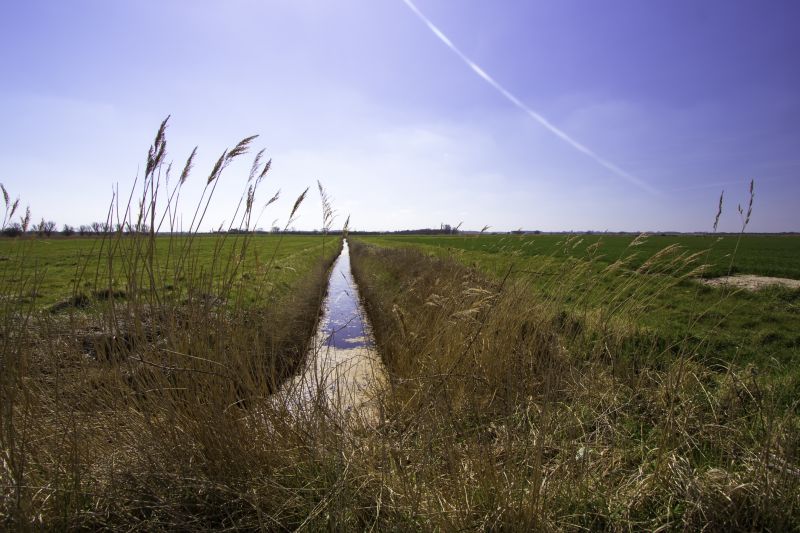Leading Drain Field Replacement Products For Seamless System Restoration
Identify high-quality options that help restore and improve your drain field performance with minimal hassle.
 Replacing a drain field is a critical component of maintaining a functional septic system. When the existing drain field shows signs of failure, such as persistent backups, foul odors, or overly saturated soil, it may be time to consider replacement options. The process involves selecting the appropriate products to ensure proper drainage and longevity of the new system. Various materials and configurations are available to suit different soil types, space constraints, and usage levels. Proper installation and the right product choices can help optimize septic system performance and reduce future maintenance needs.
Replacing a drain field is a critical component of maintaining a functional septic system. When the existing drain field shows signs of failure, such as persistent backups, foul odors, or overly saturated soil, it may be time to consider replacement options. The process involves selecting the appropriate products to ensure proper drainage and longevity of the new system. Various materials and configurations are available to suit different soil types, space constraints, and usage levels. Proper installation and the right product choices can help optimize septic system performance and reduce future maintenance needs.
Types of Products For Drain Field Replacements
Perforated Drain Pipe
Standard perforated pipes used to distribute effluent evenly across the drain field, often combined with gravel or aggregate for support.
High-Performance Gravel
Specialized gravel designed for optimal drainage and stability in drain field systems, supporting the pipe and facilitating flow.
Synthetic Drainage Modules
Pre-fabricated plastic modules that create a structured, porous environment for wastewater dispersal, simplifying installation.
Flexible Corrugated Pipe
Corrugated piping that offers flexibility for complex terrain and can be easily shaped to fit site conditions.
Absorption Bed Materials
Materials designed to enhance absorption and filtration within the drain field, improving effluent dispersal.
Geotextile Fabric
Permeable fabric used to prevent soil intrusion into the drain field while allowing water flow.
Polyethylene Drain Field Mats
Lightweight, durable mats that create a uniform distribution area for effluent in the drain field.
Sand Bed Systems
Sand-based systems that promote effective filtration and drainage in specialized soil conditions.
Lateral Field Components
Complete lateral pipe assemblies designed for easy installation and efficient effluent distribution.
Septic Tank Outlet Filters
Filters installed at septic tank outlets to prevent solids from entering the drain field system.
Drain Field Inspection Ports
Access points for inspecting and maintaining the drain field components.
Bio-Filter Media
Organic media that promotes biological breakdown of waste for enhanced treatment before dispersal.
Drain Field Repair Kits
Comprehensive kits containing various components for repairing or upgrading existing drain fields.
Septic System Additives
Chemical or biological agents used to maintain or improve drain field performance.
Prefabricated Drain Field Panels
Modular panels that can be quickly assembled to create a new drain field area.
Popular Choices
Widely used for its versatility and compatibility with various soil types, this pipe helps distribute effluent evenly.
Commonly selected for its drainage properties and support capabilities in drain fields.
Prefabricated plastic modules that streamline installation and create structured dispersal zones.
Chosen for its adaptability and ease of installation in irregular terrains.
Used to prevent soil intrusion while maintaining water flow in the drain field.
Complete lateral systems designed for efficient effluent distribution and easy setup.
Popular for upgrading or restoring existing systems with minimal disruption.
Increasingly used to enhance biological treatment within the drain field.
Materials that promote effective absorption and filtration in the dispersal zone.
Essential for ongoing maintenance and system inspection.
Lightweight mats that facilitate uniform distribution of effluent across the drain field.
Quick-to-install panels that create a structured dispersal area for wastewater.
Drain field replacement products range from traditional gravel and pipe systems to advanced synthetic alternatives designed for easier installation and improved efficiency. Understanding the specific requirements of your site and system can guide you toward the most suitable options. It is important to consider factors such as soil permeability, load capacity, and local regulations when selecting replacement components. Consulting with a septic system professional can provide valuable insights into the best approach for your situation.
Innovations in drain field products include prefabricated modules, flexible piping systems, and high-performance gravel substitutes. These options can simplify installation, reduce labor costs, and enhance the overall effectiveness of the drain field. Properly chosen products not only facilitate effective wastewater dispersal but also help prevent future clogs and system failures. Regular inspection and maintenance, combined with the right replacement materials, can extend the lifespan of your septic system and improve its reliability over time.
Key Buying Considerations
- Soil type and permeability: Select products compatible with your soil characteristics to ensure proper drainage.
- System size and capacity: Determine the expected wastewater load to choose appropriately sized components.
- Material durability: Opt for materials resistant to corrosion, decay, and mechanical stress for longevity.
- Ease of installation: Consider products that simplify setup, especially if DIY installation is planned.
- Compatibility with existing system: Ensure replacement parts integrate smoothly with current components.
- Local regulations and codes: Verify that selected products meet regional septic system standards.
- Maintenance requirements: Choose products that facilitate easy inspection, cleaning, and repairs.
- Cost and budget: Balance quality and affordability, keeping in mind long-term performance.
- Site-specific conditions: Account for terrain, water table levels, and environmental factors affecting installation.
- Environmental considerations: Avoid products that might introduce contaminants or complicate future maintenance.
- Availability and supply: Select products readily available in your area to prevent delays.
- Manufacturer reputation: Opt for reputable suppliers known for quality and support.
- Warranty and support: Check for warranties or support services offered with replacement products.
- Installation time frame: Consider how quickly the products can be installed to meet project deadlines.
- Future expansion or upgrades: Think about scalability for potential future system enhancements.
